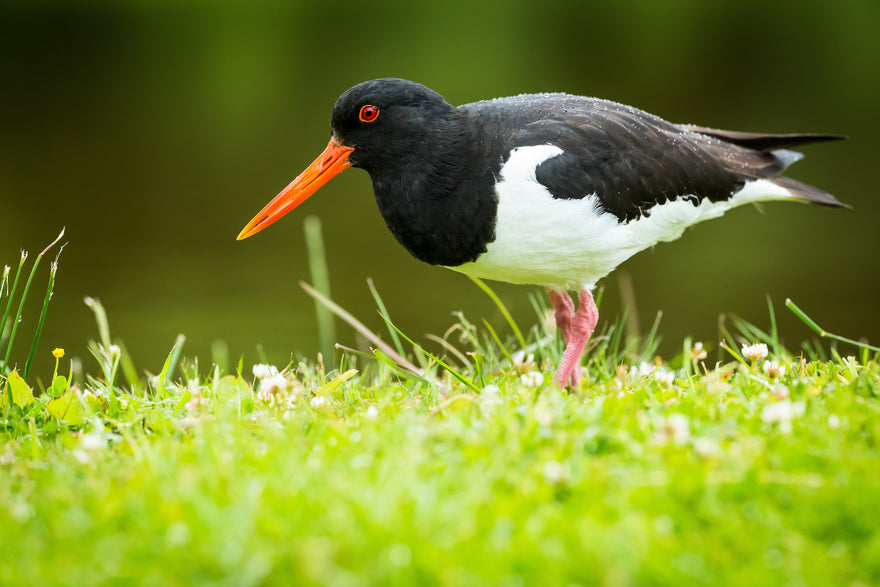February 09, 2018

Appearance
Oystercatchers are unmistakable with their eye-catching black and white plumage, distinctive long orange-red bill, and familiar loud peeping call. These wading birds can be found on freshwater and seawater, as well as inland areas including pastures and lochs. Males and females are alike in appearance, but males have a blunter, shorter and more robust bill than the female.
Striking in flight, oystercatchers have a wide white wing-stripe, a black tail and a white rump that extends as a recognisable 'V' between the wings.
Where to Find Us
Oystercatchers can be seen throughout Orkney all year round, though prolonged cold, ice and snow spells will see many birds wintering in southwest England, Wales and Ireland. Vast numbers of oystercatchers make their way back to Orkney in late February when the weather turns milder. Oystercatchers are very sociable birds and tend to form large and noisy flocks.
Breeding
A single scrape nest is made during the summer months. Nesting areas include sand, shingle beaches, loch shores and hill fields. However, they will also nest in stone dykes, roadside verges and even in the middle of roundabouts in Kirkwall! Between one and four eggs are usually laid, with incubation lasting between 24-39 days. Youngsters have brownish-black upperparts, grey legs, and a dark tip to the bill.
Feeding Habits
Their long and robust orange-red bill enables them to open and feed on shellfish such as mussels and cockles, but also to probe for worms and insects. Despite its name, oysters do not form a large part of its diet. Each bird inherits a particular feeding technique from its parent.
Our Orkney Name
In Orkney, oystercatchers have several local names such as; Skeldro, Scottie, Chaldro and Shaalder.

A Few Interesting Facts
There are 11 recognised species of oystercatcher in the world. All look broadly similar, being either black and white, or plain black with orange-red bill and legs.
Average length is 40-45cm, wingspan 83cm, weight 540g.
The average lifespan is around 12 years. However, the longevity record for an oystercatcher stands at 40 years, one month and two days. Ringed as a chick in 1970 this oystercatcher remained near the Wash in Lincolnshire all its life.
Oystercatchers have been around in Orkney for hundreds of years, as their bone remains have been identified at many of Orkney’s archaeological sites.
Orkney’s commonest wader, approximately 12,500 pairs nest in the islands each year.
In the UK, oystercatchers are classified as an Amber List species under the Birds of Conservation Concern review.
A group of oystercatchers is known as a "parcel" or "stew" of oystercatchers.
The oystercatcher is the national bird of the Faroe Islands, where it’s called the Tjaldur. Their annual arrival in early March is celebrated by the Faroese, marking the start of spring.
The oystercatcher was historically known as the ‘sea pie’.
See our Oystercatcher Range
Bring the outdoors into your home this spring with our lively oystercatchers. Our oystercatcher range includes mugs, tea sets, plates, bowls and platters, as well as matching kitchen accessories and cushions. See the collection at http://bit.ly/2EzqP83
July 17, 2018
April 23, 2018
Sign up to get the latest on sales, new releases and more …
